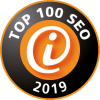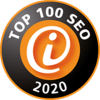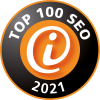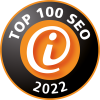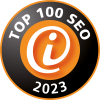The internet is a beloved marketing tool – this rings especially true for B2B companies. But a different approach needs to be taken when compared with their B2C counterparts. In this article, you will learn about the 7 indispensable steps in developing a successful B2B SEO strategy.
Step 1: Understand your target group through your buyer persona
Before bringing a product onto the market, it is essential to know what your target group is. Without a direction for your marketing strategy that is appropriate for your target group, your market launch is doomed for disaster. A so-called buyer persona is created in online marketing in order to develop a complete picture.
A buyer persona is an abstract representation of the ideal customer. To create this, exact customer data is taken from market and industry research and combined with existing customer data, and later interpreted. This in no way represents a simple description of a buyer group – it deals much more with new information that can be used subsequently for marketing, production, distribution, or sales strategies.
Keep in mind that there is not only one buyer persona in play. A B2B company often appeals to more than one target group, and thus directly creates more than one campaign for a buyer persona.
To create such an abstract representation of this, the data saved in your customer database needs to be condensed and evaluated. You may also use data from your website or social media channels. Finally, this customer data can best be presented as a mind map, including interests, demographic data, jobs, income, online buying habits, and much more.
This data helps you to divide your strategy into individual phases, since doing it all at once as a B2B rarely helps you to achieve your goals.
Step 2: Analyze buying channels
Before SEO work begins, you need to understand your company’s individual sales funnel.
– Your sales team should explain the individual steps along the customer journey to you, including the points during a sale where there is contact with the customer, which strategies have the most impact, and at which point in the process a customer bails out.
– Finally, you should evaluate the sales and analyze data to determine how your customers found you.
– Now you can combine all the data on the customer lifetime value, the average time spent acquiring and serving the customer, and the average time spent until a customer makes a purchase.
Step 3: Set your campaign up using the right keywords
Now that you know who your potential customer group is, the next step involves what they search for on the internet. This can be done by keyword research.
You need to be careful not to focus optimization on active marketing terms, but rather ask yourself how the buyer persona’s needs can be fulfilled.
As you research applicable keywords, ask yourself the following:
– What are the (main) characteristics and features of the product or service for sale?
– Which keywords gain the most organic traffic to competitor’s sites?
– What issues are my persona looking to have solved?
– How would this persona search for a solution to his/her problem?
Step 4: Draft a keyword strategy that speaks to your customers in the funnel phase
A proven method in developing a successful B2B SEO strategy involves topic clusters. By using these, you open up the possibility of achieving ranking success for not only individual keywords but a whole group of topics.
But how are these used in B2B SEO?
Within topic clusters, smaller content groups all relating to a central topic are formed. These are connected to each other via a pillar page on your website.
You begin by creating a pillar page that sufficiently presents an overview of your main topic. After this, links from this main page go to related subpages, or subtopic cluster pages. These are then in turn also linked to other related topics.
This way you can reach a potential customer in every phase of the buying journey.
Step 5: Create optimized landing pages for top seller products
Your customer acquisition strategy needs a long-term plan. In order to convert potential interests into long-standing customers, your sales pages need to be optimized.
After the search result that takes potential customers to your site, they should ideally stay on your website and buy a product. This works best by implementing informative and relevant landing pages.
In B2B, successful sales pages are synonymous with pillar pages. They are meant to motivate the user to make a purchase, but also provide an overview of the product. Call to actions nudge customers to buy more products or gather more in-depth information.
Step 6: Content strategy
Landing pages often take last place in the B2B customer journey, even though it is particularly important to get potential customers in the early phases of your purchasing funnel.
In the B2B sector, the buying process frequently takes longer than in B2C companies. This needs to be taken into consideration for SEO strategies for B2B companies by using a scalable content strategy, for example.
Remember: the more high-quality the content is, the more conducive for good Google rankings and relevant link generation, which increases user interaction. Depending on the product, blog articles, studies, ebooks, videos, and much more can be used for this.
Step 7: Promote your content and build backlinks
Building backlinks does not play as big of a role in SEO today anymore. However, the impact of it should not be underestimated and should not be left out of any strategy. The most effective way to build backlinks is through successful content marketing. If you produce high-quality content, users will automatically want to share it. To boost link building even more, you can also be proactive and contact other companies. If they love your product, they will want to recommend it and share it on their site. This expands your reach even more.
You can also write guest posts for online magazines, thus creating a name for yourself, or promote your company’s milestones via press releases, for example. This way, you can acquire new customers through these high-quality backlinks early on in your sales funnel.
As you can see, the way to a successful SEO strategy for B2B companies is not far out of reach. Discover your potential target group and optimize your website. Figure out what your buyer persona needs and offer a solution. Communicate with your target group during all phases of your purchasing funnel, and regularly adjust your strategy.
Now, can stand in the way of your online B2B success anymore!




